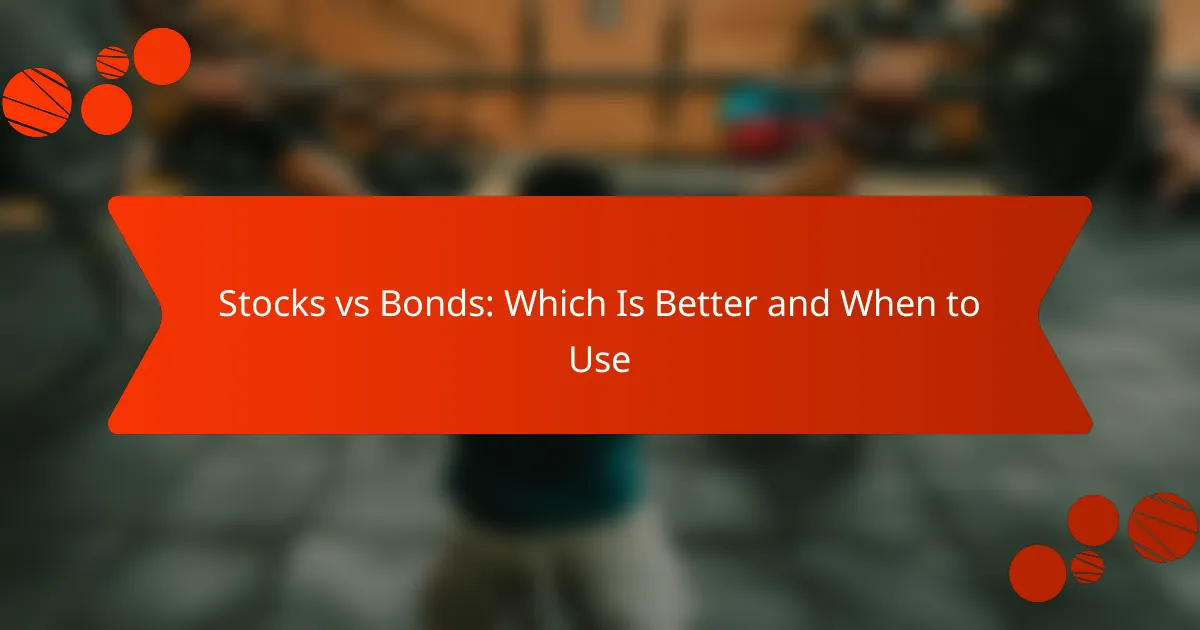High-risk investments present a unique opportunity for investors willing to navigate the potential for significant losses alongside the promise of substantial returns. Identifying these opportunities often involves focusing on volatile sectors such as technology, cryptocurrencies, and biotech, where emerging trends can lead to lucrative outcomes. As market dynamics evolve, understanding one’s risk tolerance becomes essential for making informed investment decisions in these high-stakes environments.
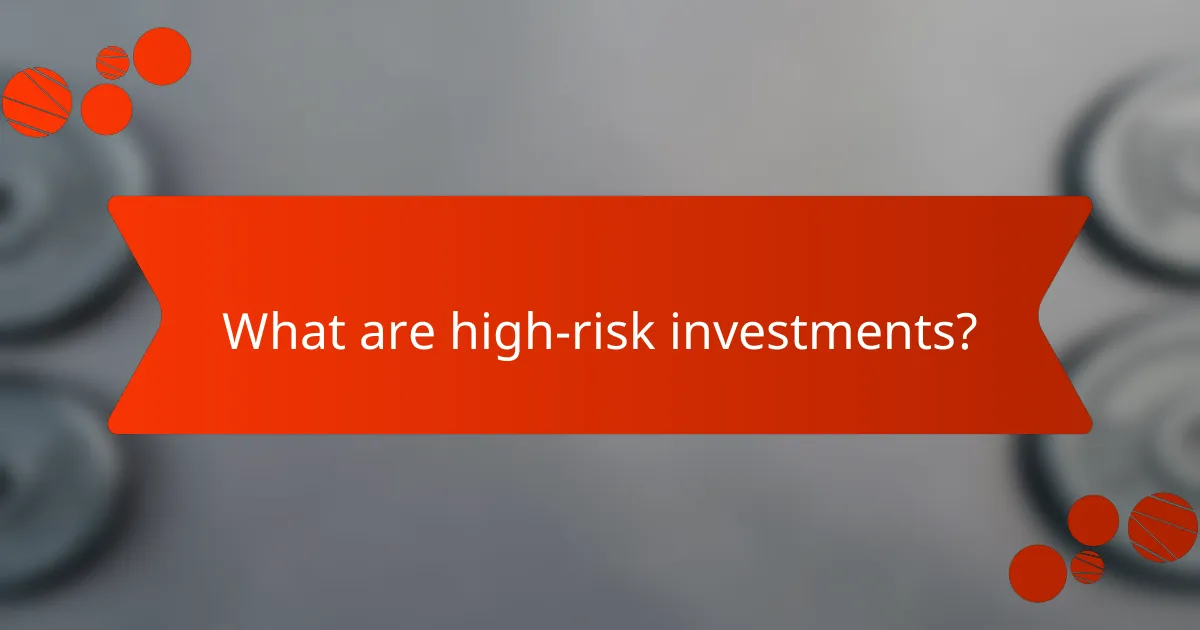
What are high-risk investments?
High-risk investments are financial assets that carry a significant chance of loss, but also the potential for substantial returns. Investors in these assets must be prepared for volatility and the possibility of losing a considerable portion of their capital.
Definition of high-risk investments
High-risk investments typically include assets like stocks of emerging companies, cryptocurrencies, and certain commodities. These investments are characterized by their unpredictability and the likelihood of sharp price fluctuations.
Investors often seek high-risk investments for the opportunity to achieve higher returns compared to traditional, lower-risk options such as government bonds or blue-chip stocks. However, the potential for loss is equally significant, making thorough research essential.
Characteristics of high-risk investments
One key characteristic of high-risk investments is their volatility, which can lead to rapid changes in value. For instance, stocks in startup companies can experience price swings of 20% or more within a single day based on market sentiment or news events.
Another characteristic is the lack of liquidity, meaning it may be difficult to sell these investments quickly without incurring a loss. Investors should also consider the regulatory environment, as high-risk assets like cryptocurrencies may face changing regulations that can impact their value.
To navigate high-risk investments effectively, investors should diversify their portfolios, only invest capital they can afford to lose, and stay informed about market trends and news that could affect their holdings.

How to identify high-risk investment opportunities?
Identifying high-risk investment opportunities involves recognizing sectors or assets with significant volatility and potential for both high returns and substantial losses. Investors should focus on emerging markets, startups, and speculative assets, while also considering their own risk tolerance and investment goals.
Market analysis techniques
Market analysis techniques for identifying high-risk investments include trend analysis, sector performance reviews, and economic indicators. Investors can use tools like technical analysis to spot price movements and patterns, or fundamental analysis to evaluate the financial health of companies in volatile sectors.
For example, analyzing the technology sector during a market boom can reveal high-growth startups that may be worth the risk. Additionally, keeping an eye on geopolitical events or regulatory changes can help predict market shifts that impact high-risk investments.
Risk assessment tools
Risk assessment tools are essential for evaluating the potential downsides of high-risk investments. Common tools include the Sharpe ratio, which measures risk-adjusted returns, and Value at Risk (VaR), which estimates potential losses in a given timeframe. These metrics help investors quantify risks and make informed decisions.
Investors should also consider using scenario analysis to understand how different market conditions could affect their investments. For instance, simulating various economic downturns can provide insights into how a high-risk asset might perform under stress, allowing for better preparation and strategy adjustments.

What are the current high-risk investment trends in the US?
High-risk investment trends in the US currently focus on sectors like technology, cryptocurrencies, and biotech. Investors are increasingly drawn to these areas due to their potential for significant returns, despite the accompanying volatility and uncertainty.
Emerging sectors in high-risk investments
Emerging sectors in high-risk investments include renewable energy, artificial intelligence, and biotechnology. These industries are gaining traction as they promise innovative solutions and growth potential, attracting both individual and institutional investors.
For instance, the renewable energy sector has seen substantial investment as the demand for sustainable solutions rises. Similarly, biotech firms working on cutting-edge therapies can offer high returns, albeit with the risk of regulatory hurdles and market acceptance challenges.
Investor sentiment analysis
Investor sentiment towards high-risk investments is currently mixed, with optimism in certain sectors and caution in others. Many investors are excited about the growth potential in technology and green energy, while concerns about market corrections and economic stability temper enthusiasm.
Surveys indicate that a significant portion of investors are willing to accept higher risks for the chance of greater rewards, particularly in volatile markets. However, it is crucial for investors to conduct thorough research and consider their risk tolerance before diving into these high-risk opportunities.
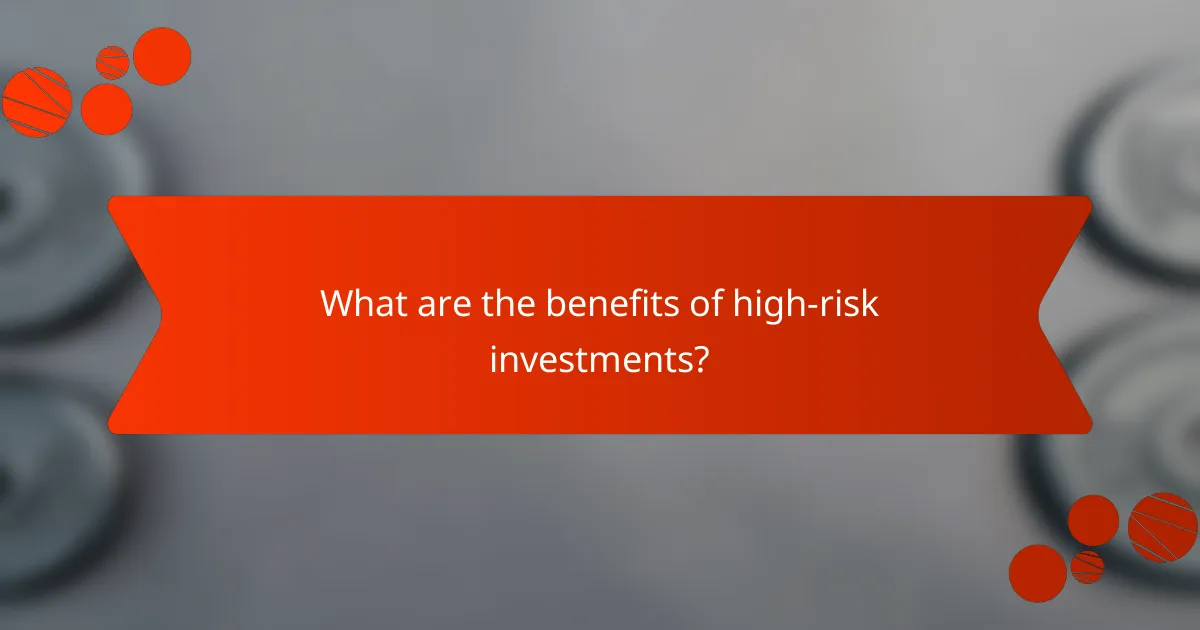
What are the benefits of high-risk investments?
High-risk investments can offer significant advantages, primarily the potential for substantial returns and the ability to diversify a portfolio. Investors willing to accept greater volatility may find opportunities that outperform traditional investments.
Potential for high returns
The primary allure of high-risk investments is their potential for high returns. While traditional assets like bonds or blue-chip stocks may yield moderate gains, high-risk options such as startups, cryptocurrencies, or emerging markets can sometimes deliver returns in the double or even triple digits.
However, these investments come with the possibility of total loss. It’s crucial to assess your risk tolerance and consider allocating only a small portion of your portfolio to these high-stakes opportunities, typically around 5-10% for most investors.
Diversification of portfolio
High-risk investments can enhance portfolio diversification by introducing assets that behave differently from traditional investments. This can help mitigate overall risk, as the performance of high-risk assets may not correlate with established markets.
For instance, incorporating a mix of high-risk stocks, peer-to-peer lending, or real estate crowdfunding can provide exposure to different sectors and market dynamics. Just ensure that your overall investment strategy aligns with your financial goals and risk appetite.

What are the risks associated with high-risk investments?
High-risk investments carry the potential for significant financial loss, often due to market volatility, regulatory challenges, and the inherent uncertainty of the assets involved. Investors must carefully assess these risks to make informed decisions that align with their financial goals and risk tolerance.
Market volatility impacts
Market volatility can dramatically affect the value of high-risk investments, leading to rapid price fluctuations. For instance, stocks in emerging markets or sectors like technology may experience swings of several percentage points within a single trading day.
To navigate this volatility, investors should consider diversifying their portfolios to mitigate risks. A balanced approach, incorporating both high-risk and more stable investments, can help cushion against sudden market downturns.
Regulatory challenges
High-risk investments often face complex regulatory environments that can impact their viability. Regulations may vary significantly by country, affecting everything from trading practices to reporting requirements. For example, cryptocurrency investments are subject to evolving regulations that can change rapidly.
Investors should stay informed about the regulatory landscape and ensure compliance with local laws. Consulting with a financial advisor familiar with these regulations can provide valuable insights and help avoid potential legal pitfalls.
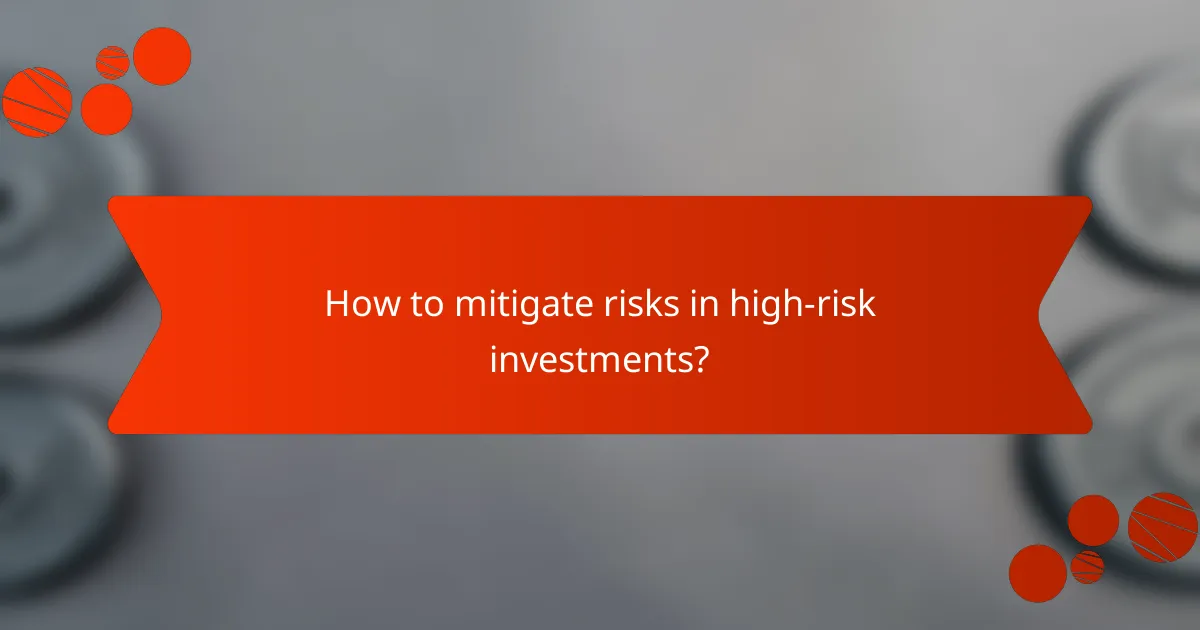
How to mitigate risks in high-risk investments?
To mitigate risks in high-risk investments, consider strategies such as diversification, setting stop-loss orders, and conducting thorough research. These approaches help protect your capital while allowing for potential growth in volatile markets.
Diversification strategies
Diversification involves spreading investments across various asset classes, sectors, or geographic regions to reduce risk. By not putting all your capital into one type of investment, you can minimize the impact of poor performance in any single area.
For instance, instead of investing solely in technology stocks, consider including bonds, real estate, and commodities in your portfolio. A well-diversified portfolio might allocate 60% to equities, 30% to fixed income, and 10% to alternative assets, depending on your risk tolerance.
Using stop-loss orders
Stop-loss orders are tools that automatically sell a security when it reaches a predetermined price, helping to limit potential losses. This strategy is particularly useful in high-risk markets where prices can fluctuate significantly.
For example, if you purchase a stock at $100 and set a stop-loss order at $90, the stock will automatically sell if its price drops to that level. This can help protect your investment from further declines, but be cautious as market volatility may trigger the order prematurely.
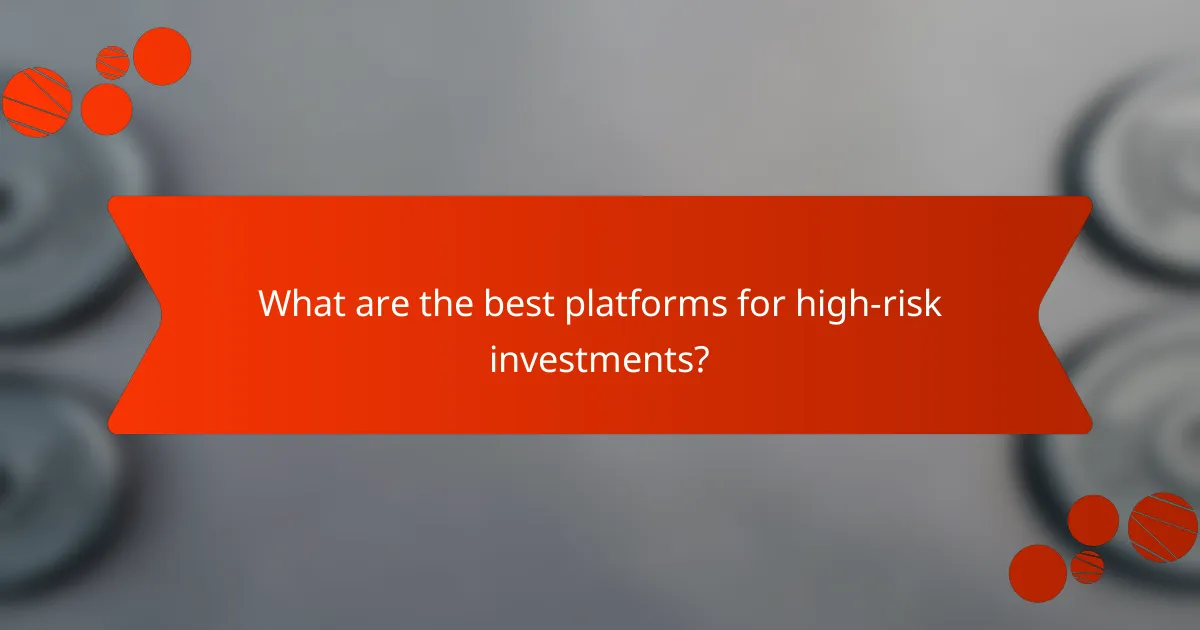
What are the best platforms for high-risk investments?
The best platforms for high-risk investments typically include online brokerages, peer-to-peer lending sites, and cryptocurrency exchanges. These platforms offer various investment opportunities but come with different levels of risk and regulatory oversight.
Online Brokerages
Online brokerages provide access to a wide range of high-risk investments, including stocks, options, and ETFs. Popular platforms like Robinhood and E*TRADE allow users to trade with minimal fees, making them attractive for risk-tolerant investors.
When choosing an online brokerage, consider factors such as user interface, research tools, and customer support. Look for platforms that offer educational resources to help you understand the risks associated with high-risk investments.
Peer-to-Peer Lending Sites
Peer-to-peer lending sites like LendingClub and Prosper connect borrowers with individual investors, allowing for potentially high returns. Investors can choose loans based on risk profiles, but they should be aware that defaults can occur, leading to losses.
Evaluate the platform’s track record and default rates before investing. Diversifying across multiple loans can help mitigate risks associated with individual borrower defaults.
Cryptocurrency Exchanges
Cryptocurrency exchanges such as Coinbase and Binance offer high-risk investment opportunities in digital currencies. The volatility of cryptocurrencies can lead to significant gains or losses in a short period.
Before investing in cryptocurrencies, research the specific coins and market trends. Ensure you understand the security measures of the exchange and consider using hardware wallets for added protection against hacks.


